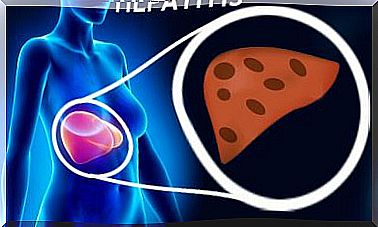Zolpidem: What It Is And How It Works
Zolpidem is a drug used to treat insomnia. It belongs to a class of medications called sedative-hypnotics. In this article, we’ll take a closer look at the following things about zolpidem:
- Mechanism of action
- Pharmacokinetics
- Metabolism
- Adverse reactions
- Interactions
What is its mechanism of action like?

Zolpidem has the same mechanism of action as the short-acting benzodiazepines (BZDs). Despite not having its characteristic structure, it is capable of inducing sleep, which is why it is said to be a non-benzodiazepine analog. To fulfill its objective, zolpidem has two mechanisms:
- Facilitates the transmission of GABA. GABA is a neurotransmitter widely distributed throughout the nervous system whose function is to inhibit or reduce neuronal activity. Zolpidem binds to a specific site on the GABA A receptor . This binding produces a change in it that makes it better couple with GABA, to enhance its inhibitory effect.
- It facilitates the fixation of GABA to specific places in the central nervous system (CNS), whose affinity will determine the anxiolytic (tranquilizer) potency.
This drug is also capable of binding to sites of the GABA-BZD receptor complex to trigger the same hypnotic actions as benzodiazepines. Specifically, it binds to central benz1 benzodiazepine receptors.
This union accounts for the lower anxiolytic, anticonvulsant and muscle relaxant effect of zolpidem compared to some benzodiazepines.
How is the pharmacokinetics?
Zolpidem is an orally administered drug that is rapidly absorbed from the gastrointestinal tract. The presence of food in the digestive system reduces the absorption of zolpidem and increases the time required for it to reach its maximum concentration, which is about 90 minutes.
As a consequence of this delay in absorption, sleepiness will also be affected, therefore zolpidem should be administered on an empty stomach.
It is 92% bound to plasma proteins, so caution must be exercised if it is taken together with other drugs that are also highly protein bound. In this case they could displace it and considerably increase its blood levels.
What happens to zolpidem once it enters the body?

Once bound to plasma proteins, it is distributed throughout the body until it reaches the liver, where it is metabolized.
Inactive metabolites (drug molecules with some chemical change that inactivate their action) are formed in the liver thanks to hepatic enzyme systems that trigger different chemical reactions: oxidative microsomal isoenzymes.
These inactive metabolites are mainly excreted in the urine. It takes about 2.2 hours for patients with normal liver and kidney function to clear 50% of the drug.
What adverse reactions could it trigger?
Most of the adverse effects associated with zolpidem are related to the CNS. The most frequent are the following:
- Dizziness
- Confusion
- Headache
- Daytime sleepiness
In the case of taking a dose less than 10 milligrams, memories are not usually generated during the period of maximum effect of the medication, about 90 after taking it. This effect occurs in 1% of patients who take this dose, which is usually the one prescribed.
Paradoxical symptoms of CNS stimulation are rare, but possible. In these situations the administration of zolpidem should be stopped:
- Euphoria
- Agitation
- Nightmares
- Hyperactivity
This drug has a rebound effect, that is, after stopping treatment, insomnia may appear again, although it is less likely to occur if the drug has been administered continuously for 28 days.
Can you have interactions? Which?

Some medicines can increase or decrease the action of zolpidem. For this reason, the doctor must be aware of all the medication that the person takes continuously to inform them well about how to take zolpidem, what to avoid and what is the most convenient in case of any type of inconvenience.
In the event that a drug enhances its effect, the person may suffer from retrograde amnesia. The list of drugs and substances that enhance their action are as follows:
- Alcohol
- Anesthetics
- Antidepressants
- Anticonvulsants
- Anxiolytics / sedatives
- Ketoconazole (affects liver enzymes that mediate the effect of zolpidem)
If its effect is reduced, the dose of the sedative should be increased to achieve the hypnotic effect sought.
No one, with the exception of the doctor, can give instructions on how to consume this medicine. Therefore, it is important to follow their instructions at all times.









